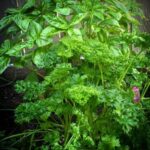Are grasshoppers good for vegetable gardens? In this article, we will explore the role of grasshoppers in vegetable gardens and their potential impact on crops. Grasshoppers, while considered pests by many gardeners, can actually play a crucial role in the ecosystem of a garden. However, their presence can also result in significant damage to vegetable crops, making it important to understand their impact and how to manage them effectively.
Grasshoppers are easily identifiable insects with distinct physical characteristics. Their presence in vegetable gardens can lead to significant damage to crops such as tomatoes, peppers, and lettuces. Understanding the potential harm caused by grasshoppers is essential for gardeners looking to protect their produce.
While grasshoppers can be detrimental to vegetable gardens, they also offer potential benefits that contribute to the overall health and biodiversity of the garden ecosystem. By exploring natural methods to control grasshopper populations and prevent damage to crops, gardeners can maintain a balanced environment for both plants and insects.
Identification of Grasshoppers
Grasshoppers are common pests in many vegetable gardens, and being able to identify them is crucial for effective pest management. These insects are typically around 1 to 2 inches long and have a distinctive appearance that includes long hind legs for jumping, wings for flying, and large eyes.
Their coloring can vary widely, but they often blend into their surroundings with shades of green or brown. In vegetable gardens, grasshoppers are most active during warm, sunny days and can be seen hopping from plant to plant as they feed on the leaves and stems.
One way to identify grasshoppers in your vegetable garden is by observing the damage they cause. They typically consume irregular-shaped holes in the leaves of plants, leaving behind ragged edges. Additionally, their droppings may be present near the damaged areas. By closely inspecting the foliage of your vegetable plants and looking for these signs of grasshopper activity, you can determine if these pests are present in your garden.
To further aid in identifying grasshoppers, it’s helpful to familiarize yourself with the different species that may be found in your region. Some common types of grasshoppers include Differential Grasshoppers and Redlegged Grasshoppers.
Knowing which species are prevalent in your area can help you develop targeted control strategies based on their specific behaviors and life cycles. With a keen eye and knowledge of grasshopper appearance and behavior, you can effectively identify these pests in your vegetable garden and take appropriate measures to manage their populations.
Impact of Grasshoppers on Vegetable Gardens
Grasshoppers are common pests in vegetable gardens and can have a significant impact on the health and productivity of vegetable crops. These insects feed on a wide variety of plants, including many commonly grown vegetables, and their voracious appetites can lead to widespread damage if left unchecked.
The potential damage caused by grasshoppers includes defoliation, where they consume the leaves of plants, as well as direct feeding on fruits and vegetables. This can result in stunted growth, reduced yield, and even the death of plants in severe cases. Some vegetables that are particularly susceptible to grasshopper damage include tomatoes, peppers, cabbage, and beans.
In addition to the direct impact on vegetable crops, grasshoppers can also indirectly harm plants by promoting the growth of harmful fungi and bacteria through their feeding activities. This further exacerbates the negative effects of grasshopper infestations on vegetable gardens. Given these potential consequences, it is important for gardeners to be aware of the signs of grasshopper presence and to take proactive measures to protect their vegetable crops from these pests.
- Visual inspection of plants for signs of grasshopper damage such as chewed leaves or missing sections
- Monitoring for the presence of adult grasshoppers or their nymphs in the garden
- Keep an eye out for characteristic egg pods laid in soil or plant debris during fall or early spring
Benefits of Grasshoppers
The potential benefits of grasshoppers in vegetable gardens may not be immediately apparent, as they are often viewed as pests due to the damage they can cause. However, it’s important to recognize that grasshoppers also play a role in the ecosystem and can have some positive impacts on vegetable crops.
One of the main benefits of grasshoppers is their role in nutrient cycling. As grasshoppers feed on plant material, they release nutrients back into the soil through their waste, which can help to improve soil fertility and overall plant health.
Additionally, grasshoppers serve as a food source for other animals in the garden. They are an important part of the food chain and can be preyed upon by birds, reptiles, and other insects. By providing a food source for these natural predators, grasshoppers contribute to the biodiversity and balance of the garden ecosystem. In this way, they help to support a healthy and thriving garden environment.
It’s also worth noting that while grasshoppers can cause damage to certain plants, they tend to prefer weeds over cultivated crops. By feeding on weeds, they can help to naturally control weed populations in the garden. This can be particularly beneficial for organic gardeners who may be looking for natural ways to manage weeds without relying on chemical herbicides.
| Potential Benefits | Impact |
|---|---|
| Nutrient Cycling | Improves soil fertility and overall plant health |
| Food Source for Predators | Contributes to biodiversity and balance of the garden ecosystem |
| Weed Control | Naturally helps control weed populations in the garden |
Natural Methods to Control Grasshoppers
Introduction to Natural Control
When it comes to maintaining a healthy and productive vegetable garden, finding natural methods to control grasshoppers can be an effective way to minimize damage without harming the environment. Implementing natural control methods not only helps to protect vegetable crops but also promotes a balanced and sustainable ecosystem in the garden.
Natural and Environmentally Friendly Methods
One natural method for controlling grasshopper populations is the introduction of natural predators, such as birds, frogs, and certain species of insects. These predators feed on grasshoppers, helping to keep their populations in check. Creating habitats for these beneficial creatures, such as birdhouses, ponds, and insect-friendly plants, can encourage them to take up residence in the garden and assist in controlling grasshopper numbers.
Additionally, planting a diverse range of vegetation in and around the vegetable garden can help attract beneficial insects that prey on grasshoppers. Flowers like dill, fennel, and marigold are known to attract insects like ladybugs and lacewings, which are natural enemies of grasshoppers. By providing a variety of plants that support a healthy insect population, gardeners can naturally regulate grasshopper numbers without resorting to chemical pesticides.
Reducing Grasshopper Damage Without Harmful Chemicals
For those who prefer not to use harmful chemical pesticides in their vegetable gardens, there are several non-toxic options for reducing the damage caused by grasshoppers. One option is the use of physical barriers like row covers or netting over vulnerable plants. This can prevent grasshoppers from reaching and feeding on vegetable crops while still allowing sunlight and water to reach the plants.
Another method is encouraging biodiversity by creating an environment that supports a variety of plant species. Diverse habitats attract different types of insects, birds, and other animals that contribute to pest control naturally. By prioritizing plant diversity and attracting natural predators, gardeners can effectively reduce grasshopper damage in an environmentally friendly manner.
Preventing Grasshopper Damage
Grasshoppers can be a nuisance in vegetable gardens, causing significant damage to crops if not properly managed. However, there are several natural and environmentally friendly methods that can be implemented to prevent grasshopper damage and protect your vegetables.
One effective method for preventing grasshopper damage in vegetable gardens is through the use of barrier methods. Creating physical barriers around individual plants or garden beds can help to deter grasshoppers from feeding on your crops. This can be accomplished by using materials such as row covers, netting, or even cardboard collars placed around the base of plants.
Another natural way to control grasshopper populations in vegetable gardens is by introducing beneficial insects that feed on these pests. For example, attracting predatory insects like ladybugs, lacewings, and praying mantises to your garden can help keep grasshopper numbers in check. Additionally, encouraging a diverse range of plant species in your garden can also attract other beneficial insects that will contribute to a balanced ecosystem and help naturally control grasshopper populations.
In addition to using barrier methods and attracting beneficial insects, maintaining a healthy garden environment is essential for preventing grasshopper damage. Keeping the garden clean and free of weeds can eliminate potential hiding spots for grasshoppers, making it more difficult for them to establish a presence in the area. By implementing these natural methods and maintaining a balanced ecosystem in your vegetable garden, you can effectively prevent grasshopper damage while promoting sustainable gardening practices.
Attracting Beneficial Insects
Importance of Natural Predators
Natural predators play a crucial role in controlling grasshopper populations in vegetable gardens. By attracting beneficial insects such as ladybugs, lacewings, and praying mantises, gardeners can create a natural balance that keeps grasshopper numbers in check. These insects are known for preying on grasshoppers and can help reduce their population without the need for harmful chemicals.
Creating Habitat for Beneficial Insects
One way to attract beneficial insects is by creating a habitat that meets their needs. Planting diverse flowers, herbs, and native plants can provide food sources and shelter for these natural predators. Additionally, incorporating features like water sources and sheltered areas can create an inviting environment for beneficial insects to thrive in the garden.
Companion Planting
Another effective strategy for attracting beneficial insects is through companion planting. Certain plants, such as marigolds, dill, and fennel, are known to attract natural predators like ladybugs and lacewings. By strategically interplanting these species among vegetable crops, gardeners can encourage the presence of these helpful insects and support a healthy ecosystem.
By implementing these methods to attract beneficial insects, gardeners can naturally manage grasshopper populations while promoting a sustainable and environmentally friendly approach to pest control in vegetable gardens. Creating a balanced ecosystem that supports natural predators not only helps protect vegetables from damage but also contributes to overall garden health and biodiversity.
Conclusion
In conclusion, it is clear that grasshoppers can have both positive and negative impacts on vegetable gardens. While they can cause damage to crops, there are also potential benefits to having grasshoppers in the garden ecosystem. It is important for gardeners to find a balance in managing grasshopper populations while also promoting a healthy and sustainable environment for vegetable crops.
By identifying grasshoppers and understanding their impact on vegetable gardens, gardeners can make informed decisions on how to control their populations. Utilizing natural methods such as attracting beneficial insects and implementing preventative measures can help minimize grasshopper damage without the use of harmful chemicals. This not only protects the vegetable crops but also contributes to a healthier garden ecosystem overall.
Ultimately, maintaining a balanced ecosystem in the vegetable garden is crucial for sustainable gardening practices. While it may require some effort and experimentation, finding natural ways to control grasshoppers and other pests while supporting beneficial insects will lead to a more harmonious and thriving garden. By doing so, gardeners can enjoy healthier vegetable yields while also contributing to the overall health of the environment.
Frequently Asked Questions
Should I Kill Grasshoppers in My Garden?
Killing grasshoppers in your garden is not always necessary, as they do play a role in the ecosystem. However, if their numbers are causing significant damage to your plants, you may need to consider control methods. This could include manually removing them, using barriers or traps, or applying organic insecticides.
Can Grasshoppers Ruin a Vegetable Crop?
Grasshoppers have the potential to ruin a vegetable crop if their population is large and left unchecked. They can consume leaves, stems, and even entire plants if the infestation is severe enough. In such cases, it’s important to take action to protect your crops from devastation.
Do Grasshoppers Destroy Tomato Plants?
Yes, grasshoppers can destroy tomato plants by feeding on their leaves and stems. If left untreated, this damage can seriously stunt the plant’s growth and reduce fruit production. To prevent this, monitoring the population of grasshoppers in and around your garden is important so that you can intervene if necessary.

If you’re looking to get into vegetable gardening, or are just looking for some tips on how to make your current garden better, then you’ve come to the right place! My name is Ethel and I have been gardening for years. In this blog, I’m going to share with you some of my best tips on how to create a successful vegetable garden.





